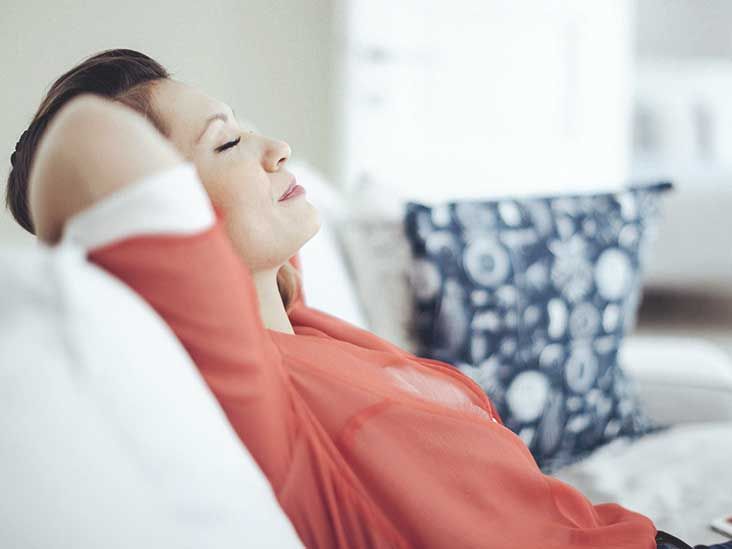
- Select a language for the TTS:
- UK English Female
- UK English Male
- US English Female
- US English Male
- Australian Female
- Australian Male
- Language selected: (auto detect) - EN
Play all audios:
How anxiety is affected by the breath Most everyone will experience mild anxiety at some point in their lives. Some people’s anxiety reaction becomes much more extreme and can happen during
normal, daily activities. This is called an anxiety disorder. There are many kinds of anxiety disorders, including generalized anxiety, social anxiety, and panic attacks. Anxiety can affect
your breathing. On the other hand, your breathing can affect feelings of anxiety. Deep or rhythmic breathing is a good way to decrease symptoms of anxiety. Breathing can also help focus your
thoughts. ANXIETY-INDUCED BREATHING PROBLEMS The symptoms of anxiety are slightly different for each person, but they almost always include rapid breathing and an increase heart rate. Other
anxiety symptoms include restlessness, inability to concentrate, and sleep problems. These symptoms may range in severity and you may only have a few of them. The most common symptom is
that your breath gets more rapid as you are exposed to a stressful or anxiety-inducing situation. Breathing exercises Deep breathing can be done pretty much anywhere and anytime you feel
anxious, without any special tools or time frame. Sometimes just taking a few deep breaths before entering a stressful situation or when you find yourself in the middle of one, can lower
stress and anxiety levels. However, if you want to have a more structured time of relaxation and anxiety relief, here are a few exercises you can try. RELAXING DEEP BREATHING * Sit
comfortably. * Breathe in through your nose for 6 seconds (try to fill your abdomen first, then up through your upper chest). * Hold your breath for 2-3 seconds. * Release your breath slowly
through pursed lips. * Repeat 10 times. * Sit comfortably. * Close your eyes. * Take one deep breath and release it while saying the word “relax” either silently or aloud. * Breathe
naturally 10 times while counting each breath (try to relax your face muscles as well as shoulders and other areas). * After counting down from 10 to 1, open your eyes. COUNTING BREATHS *
Sit comfortably. * Close your eyes. * Take one deep breath and release it while saying the word “relax” either silently or aloud. * Breathe naturally 10 times while counting each breath (try
to relax your face muscles as well as shoulders and other areas). * After counting down from 10 to 1, open your eyes. MEDITATION BREATHING This is the simplest of the breathing exercises
and can be done in just about any stressful or anxiety-producing situation: * Breathe out slowly. * Ignore when you breathe in. * Concentrate only on breathing out. * Breathe out as much air
as possible before breathing in again. * Focus on relaxing the muscles in your face, shoulders, and anywhere else you feel tense while you breathe. These are just a few examples of
breathing exercises that can be done most anywhere you find yourself feeling anxious. Other forms of breathing to relieve anxiety and stress are found in practicing yoga, meditation, and
mindfulness. How effective are anxiety breathing exercises? There are two types of breathing, based on what part of your lungs you are using. When you are exercising or feeling stress, you
will usually breathe with the upper section of your lungs or chest. This is called chest breathing. This type of breathing is usually shorter and faster, and makes your body tense. Deep
breathing comes from your diaphragm, or in the area of your stomach. It will cause your body to relax and can reduce anxiety. Taking long, slow breaths from the abdominal area will also
help: * increase the amount of oxygen and release a sense of calm throughout your brain and body * lower your blood pressure * reduce your heart rate * relax your muscles * focus your mind
on your body and away from whatever is making you anxious There is ongoing research into the effectiveness of deep breathing for anxiety and stress. Some research shows that deep breathing —
and even sighing — brings relief to people with both low and high sensitivity to anxiety. Other ways to manage anxiety While breathing has been shown to alleviate some anxiety, it is
important to realize that panic attacks, anxiety disorders, and depression are mental health conditions. These should always be assessed and treated by a medical professional. If your
anxiety feels out of control, affects your daily life, or simple relaxation techniques do not help, it is time to contact your doctor. There are treatments, counseling, as well as
medications that can ease anxiety that goes beyond occasional anxiety. You can talk to your doctor about incorporating some deep breathing exercises with any other treatments you are given.
Breathing can help you with a panic attack and enable you to get to your medication or therapist. Outlook Anxiety can affect people on different levels. It can also affect people during
different phases of their lives. Since everyone has some type of anxiety from time to time, understanding the effect that breathing has on anxiety can help you to utilize these exercises and
relieve some (or all) of your anxiety. If your anxiety is due to a mental illness, then breathing exercises can be used alongside other treatments or medications for further relief. Mindful
Moves: 15 Minute Yoga Flow for Anxiety







